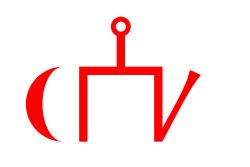Krymský chanát
| Krymský trůn a step Kypčaků Taht-i Qırım ve Deşt-i Qıpçaq تخت قريم و دشت قپچاق
| |||||||||||||
Geografie
| |||||||||||||
Rozloha | 150 000 km² | ||||||||||||
| Obyvatelstvo | |||||||||||||
Národnostní složení | |||||||||||||
kypčacké (krymská tatarština, nogajština aj.), osmanská turečtina, čagatajština (literatura), italština, řečtina, krymská gótština | |||||||||||||
| Státní útvar | |||||||||||||
Vznik | |||||||||||||
Zánik | |||||||||||||
{{{Podřízené celky}}} | |||||||||||||
| Státní útvary a území | |||||||||||||
| |||||||||||||
Krymský chanát (krymskotatarsky قريم خانلغى, Qırım Hanlığı, Къырым Ханлыгъы, rusky Крымское ханство), oficiálně Krymský trůn a step Kypčaků (krymskotatarsky تخت قريم و دشت قپچاق, Taht-i Qırım ve Deşt-i Qıpçaq), byl historický státní útvar krymských Tatarů v letech 1441–1783, rozkládající se na území poloostrova Krym při pobřeží Azovského moře, severního pobřeží Černého moře a území Kubáně mezi ústím Dunaje a Dněprem. Ve staré evropské geografii byl chanát znám jako Malá Tartárie (oproti Velké Tartárii).
Historie
Zakladatelem dynastie Girejů a prvním vládcem samostatného státu krymských Tatarů se stal Hadži I. Girej. V roce 1475 se Krymský chanát stal oficiálně vazalem Osmanské říše, ale v jejím rámci si zachoval praktickou nezávislost. V roce 1532 bylo centrum chanátu přeneseno do Bachčisaraje.[1]
Po rusko-turecké válce na základě mírové dohody z Küçük Kaynarca (1774) se Osmané Krymu vzdali a v roce 1783 chanát anektovalo Rusko a vytvořilo na jeho území Tavrickou gubernii. Krymský chanát byl nejdéle existující stát z následnických států po rozpadu Zlaté hordy.
Reference
- ↑ COUFALOVÁ, Iveta; ŠORM, Martin. Krym. Poloostrov vzdálených říší. Dějiny a současnost. Březen 2019, roč. IXL, čís. 3, s. 8. ISSN 0418-5129.
Externí odkazy
 Obrázky, zvuky či videa k tématu Krymský chanát na Wikimedia Commons
Obrázky, zvuky či videa k tématu Krymský chanát na Wikimedia Commons
Média použitá na této stránce
Tamga Geraev is a symbol of the ruling dynasty in the Crimea. Tarak-tamga was placed on coins, documents of the state were certified with it. She is depicted on the Bakhchisarai Palace.
Autor:
- Crimea_blank.png: Oleksa Haiworonski, modified by Kjetil_r
- derivative work: Blleininger (talk)
Black Sea Region in 1600.
Autor: BlinxTheKitty, Licence: CC BY-SA 4.0
Possible flag or banner of the Ottoman Empire (or Ottoman army) according to Hieronymus (aka Jérôme) Bosch (crwflags.com), the painter lived in the Middle Ages (c. 1450–1516) in Brabant and some of his paintings show Ottoman flags. These are generally red with a white crescent. It was the end of the XVth century, when the Ottomans had just conquered Constantinople and thus ended the Byzantine Empire, that was a shock for the Christian world.
Autor: Ultimete, Licence: CC BY-SA 4.0
Flag of the w:Crimean Khanate during 15th century with the symbol of Giray Dynasty on blue background as shield flagtype according to the book "Kırım Hanlığı Tarihi Üzerine Araştırmalar" of Halil İnalcık.
Autor: Vorziblix, Licence: CC0
The flag of the Golden Horde, as shown in Angelino Dulcert's 1339 map. A similar flag appears in the later Catalan Atlas (1375), providing corroboration.
See also Early Mongol Flags at crwflags.com:
- One of the charges is a crescent and the other looks like a simplified form of the tamga from the flag of Idel Ural. On different copies of the flag, the crescent has different size; it is often smaller than shown here, sometimes even reduced into a simple oblique stroke and conjoined with the other charge into a si[n]gle symmetrical object; the other charge also sometimes lacks the oblique part [2, 3]. It was obviously difficult to draw the charges always the same way. The cities with this flag which are easy to identify are [2, 7, 8]: Sarai, the capital (spelled Sarra) - there is also a depiction of the ruler, "Jani Beg Lord of Sarai" ("Jambech senyor de Sarra"); Tana, present-day Azov, Russia; and Urgench, Uzbekistan (spelled Organci, with a cedilla under the c; nowadays ruined). This flag is a variant of the flag of "Emperor of Sarai" ("Emperador de Sara") from "Libro del conoscimiento de los reinos" [7] and might be the one that had really existed, considering the similarity of its charges with those from the flag of Idel Ural.
- [2] Enciclopedia universal ilustrada, vol. XXI, Espan~a Madrid: Espasa-Calpe S.A., 1968
- [3] Istorija otkric'a i istraz<ivanja, vol. I: Poc<etak istraz<ivanja; Mladinska knjiga, Ljubljana, 1979; Original title: A History of Discovery and Exploration, vol. I: The Search Begins;(C) 1973 Aldus Books Limited, London
- [7] Libro del Conoscimiento. Viajes medievales, vol. I Madrid: Fundacio'n Jose' Antonio de Castro, 2005 ISBN 84-96452-11-5 (complete edition) ISBN 84-96452-12-3 (vol. I) [e9s50]
- [8] A[p]pendices. (Ibid.)
- Tomislav Todorovic, 21 April 2007










